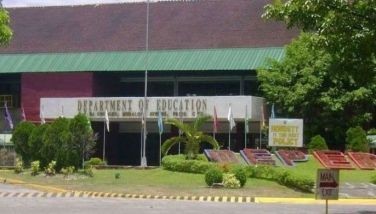Phl expands CCT to cover 28 million poor people by 2015
MANILA, Philippines (Xinhua) - President Benigno Aquino III has expanded his administration's conditional cash transfer (CCT) program to cover some 28 million poor Filipinos by 2015, a year before Aquino steps down from office.
Aquino's six-year term ends in 2016 after which he is banned by the Philippine Constitution from running for another term.
According to Florencio Abad, Aquino's budget secretary, the state allocation for the cash subsidy will continue to increase until 4.6 million families, or roughly 28 million people, will be benefited by 2015. In depressed communities in the Philippines, a poor family usually consists of six members.
For the current year, the Aquino administration has set aside P44 billion ($1.02 billion) from the national budget for the CCT program.
Under the program, poor Filipino households receive monthly cash subsidies for five years in exchange for their commitment to sending their children to public schools, and to having mothers and her kids regularly visit health centers.
The maximum monthly subsidy per family is P1,200 ($28), or P300 ($7) per child for up to three children and another P300 ($7) for the mother.
An immediate objective of the program is to increase the number of children of poor households going to schools. The long-term objective is to increase employment opportunities for them so they can eventually lift their families out of poverty.
Multilateral institutions, such as the World Bank and the Asian Development Bank, have cited the CCT as being on the right track in reducing poverty incidence in the country.
The CCT, patterned after similar state subsidy for the poor in several Latin American countries, was started in 2008 during the term of former President Gloria Macapagal-Arroyo.
In an earlier study, the World Bank found that the government' s CCT program is so far "proving to be a worthy investment."
"This trend indicates a shift in the spending pattern among CCT beneficiaries towards greater investments in health and education for the children," Nazmul Chaudhury, World Bank's country sector coordinator for human development, said in the World Bank study titled "Philippines Conditional Cash Transfer Program, Impact Evaluation 2012,"
Despite its robust economic growth, the Philippines continues to suffer from one of the highest poverty rates among emerging Asian economies.
According to the National Statistical Coordination Board (NSCB), poverty incidence in the country stood at 27.9 percent in the first semester of 2012, practically unchanged from the 28.6 percent in the first half of 2009 and 28.8 percent in the first half of 2006.
But NSCB Secretary General Jose Ramon G. Albert said the CCT is not expected to immediately yield significant changes in incomes. "The CCT is investment in human capital, particularly in education and health, where the impact may be seen only in five to 10 years," he said.
Majority of the beneficiaries of the CCT program are "squatter families" or what the government calls "informal settlers," who live in shanties built precariously beside river banks and waterways in Metro Manila.
The recent flooding in parts of Metro Manila has put pressure on the Aquino administration to find a lasting and permanent solution to this perennial problem.
In an article published in a Manila daily, Salvador Enriquez, a former finance and budget secretary, said that developing new towns as "integrated viable economies" could provide the alternative to the current "relocation-oriented" strategy, which has failed to effectively address the problem of informal dwellers.
Enriquez said that areas in some provinces close to Manila, such as Bulacan, Rizal and Laguna, can be developed into new or satellite towns instead of just relocation sites as what the current approach is doing.
He said that the new town, which can be developed into a commercial center, can be jointly undertaken with the private sector.
Enriquez said the concept is not new since it has been tried and found to be successful in many countries, such as Britain, Singapore, Malaysia, Australia and China.
One example that Enriquez cited was the development China's Shenzhen, a fishing village that in 1979 had a population of only 30,000 and a gross domestic product (GDP) per capita of 606 yuan.
The late Chinese leader Deng Xiao Ping decided to make it a new city and a showcase of China's new economic advancement. "Today, Shenzhen has a population of over 10 million--people voluntarily moved there as development was taking place--and a GDP per capita of $14,000, one of the highest in the world," Enriquez said.
He said that what the Philippines can do is not in the magnitude of Shenzhen but a model on a much smaller scale that can be replicated in many parts of the country.
- Latest
- Trending




























